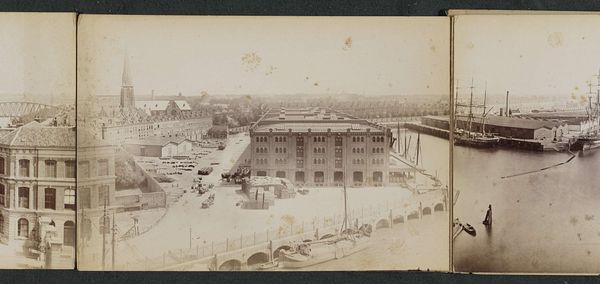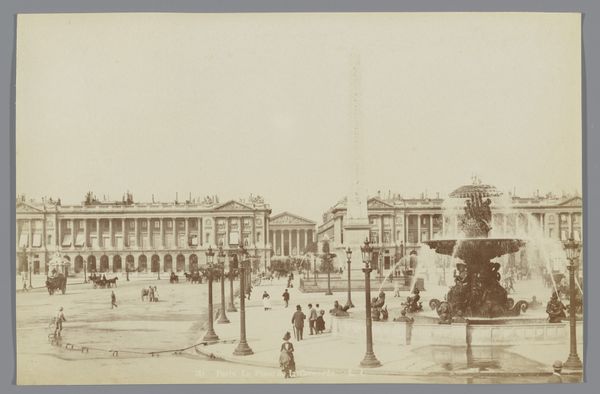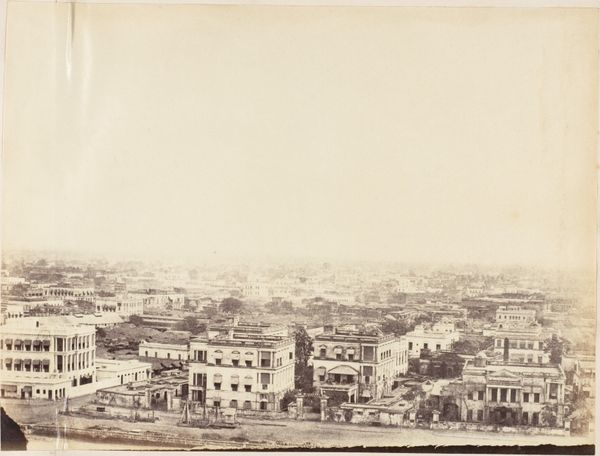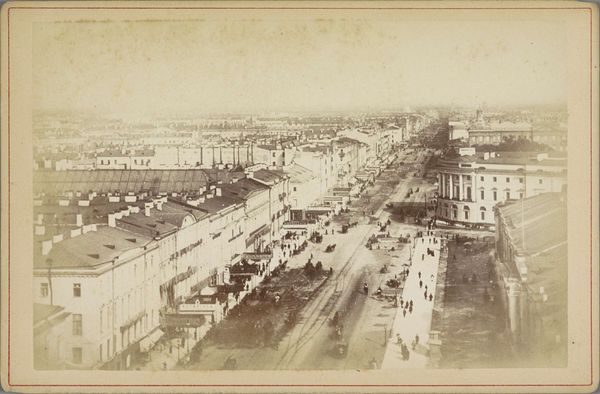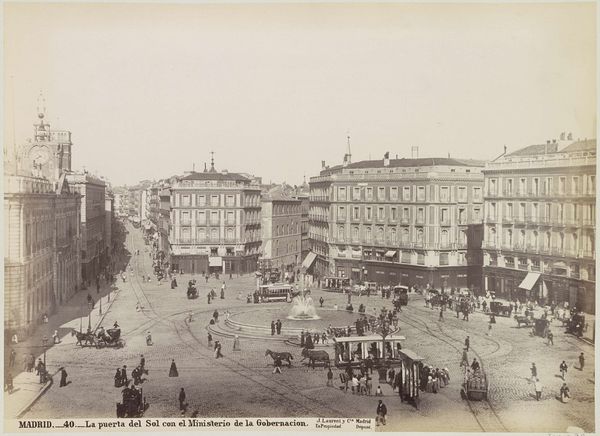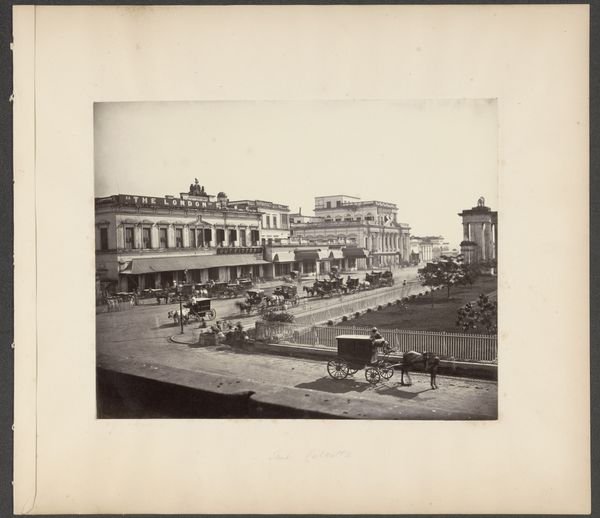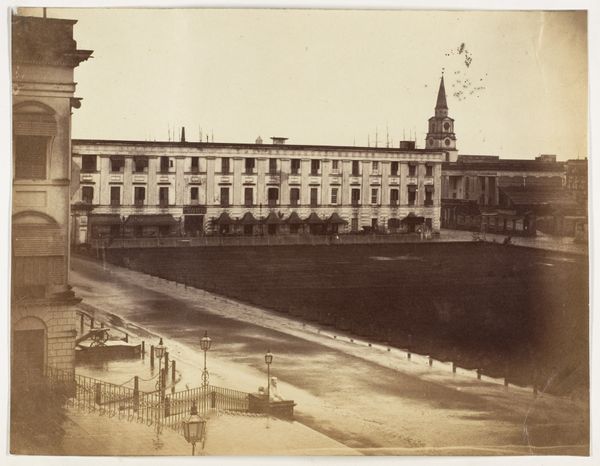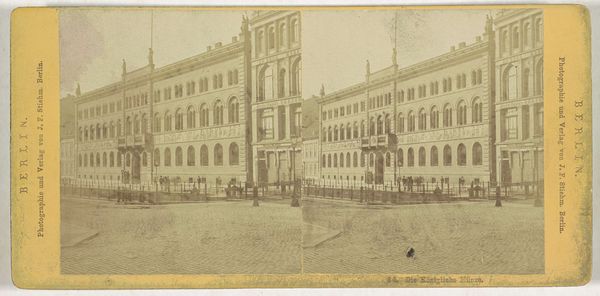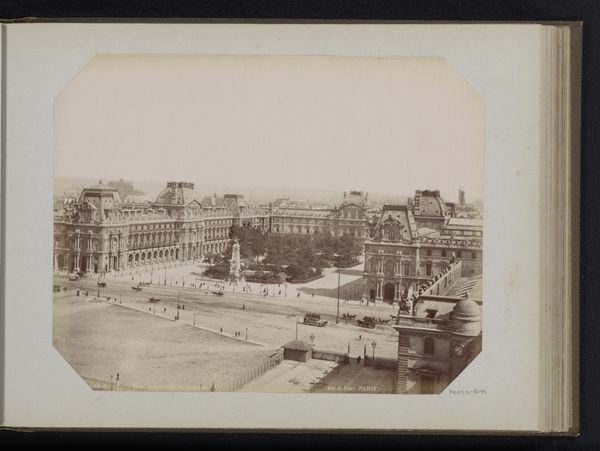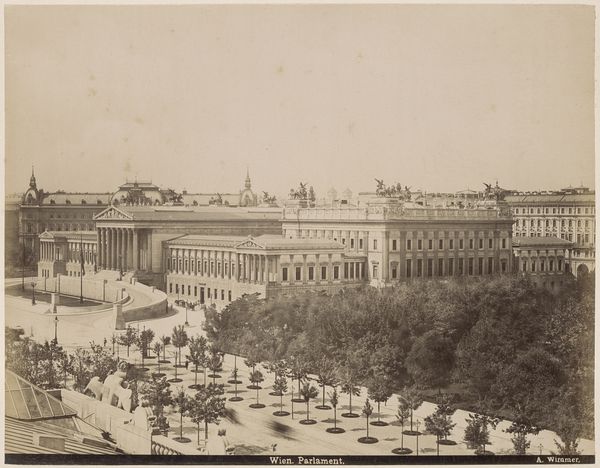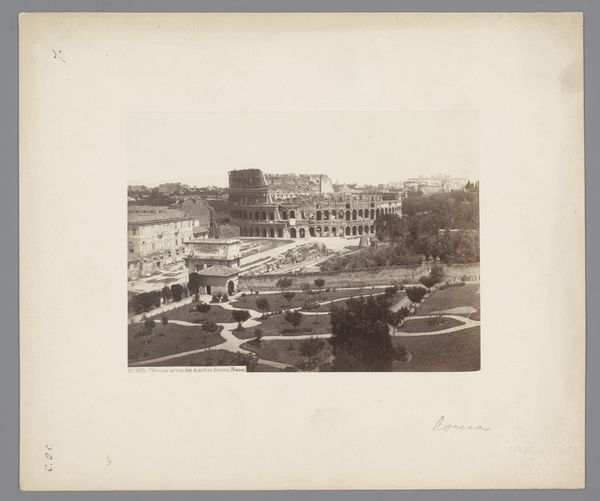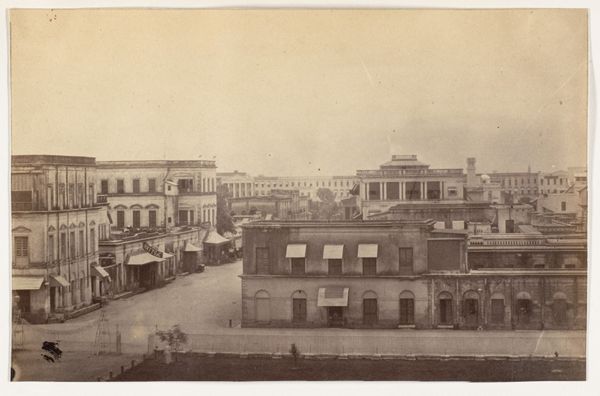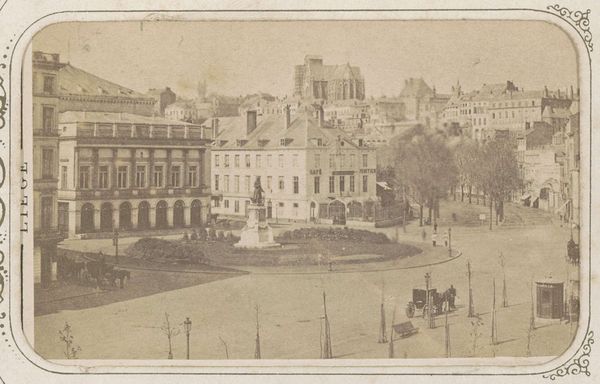
photography, albumen-print, architecture
#
photography
#
cityscape
#
albumen-print
#
architecture
#
realism
Dimensions: height 92 mm, width 150 mm
Copyright: Rijks Museum: Open Domain
Curator: Here we have an albumen print from around 1880-1900 by J. Daziaro, titled "Gezicht op het Mariepaleis (Mariinskipaleis) in Sint-Petersburg"—a view of the Marie Palace in St. Petersburg. Editor: Immediately, I’m struck by its subdued grandeur. The tones are muted, almost sepia-like, yet the palace itself commands a clear sense of imposing, geometrical presence. Curator: The image presents a clear Realist perspective. The palace was designed by Andrei Stackenschneider, and was home to Grand Duchess Maria Nikolaevna, daughter of Nicholas I. Later, of course, it would have a major political shift, eventually becoming the seat of the State Council and playing a significant role during periods of intense social and political transformation. The photograph freezes a moment within that shift. Editor: Absolutely. And technically, Daziaro's skillful use of the albumen process brings out tremendous detail. The facade of the Marie Palace is just so clearly articulated, its neoclassical elements impeccably rendered. It’s almost hyperreal, yet there’s an atmospheric haze that softens the hard lines. The arrangement creates depth that visually reinforces the separation of ruler and those they ruled. Curator: Precisely. Think about who would have consumed this image then. Consider how visual representations, particularly photography, were crucial tools in solidifying and disseminating power during this period, reinforcing a carefully curated vision of imperial authority. Also it invites us to look closer into architecture's link to gender in Russian royalty. Editor: You're so right. And while its purpose would've been quite propagandistic, even if unintentionally, now, over a century later, the artistry itself remains captivating. The balance of light and shadow creates these striking patterns across the building, drawing you in. The eye dances between detailed focus of the central statue in the plaza with the fading background where the horizon fades almost completely. It shows us, from the ground-up, how wealth disparity became baked into the foundations. Curator: Yes, considering the period, what was highlighted and how the composition of the frame centered architecture can expose certain values embedded in the construction and presentation of Russian identity at the time. Editor: Seeing how a formal portrait is equally shaped and bound by the same social frameworks as Daziaro's palace photo offers, provides valuable context. It reveals the enduring dialogue between aesthetics and power. Curator: The image certainly makes me think more about architecture and representation in tsarist Russia. Editor: I appreciate how the albumen print, through its sharp clarity and subtle tonal gradations, provides a timeless record and now allows it to transform into dialogue about its complicated role then and our reflection on its complicated legacy now.
Comments
No comments
Be the first to comment and join the conversation on the ultimate creative platform.
